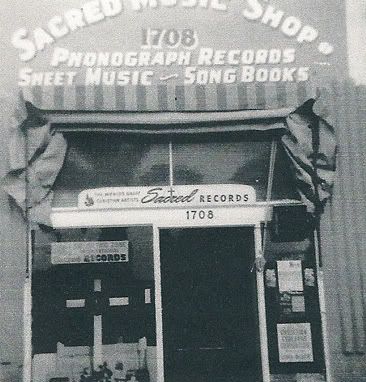
This is the first of two parts in the story of Ken Larkey and his lifelong journey through Long Beach’s music scene, culminating in the founding of the Long Beach Historical Museum and his own iconic place in the annals of city history.
In Feb. 1971, world-class collector and archivist Ken Larkey began his Long Beach Historical Museum at First St. and Linden Ave. with rent at $50, resulting in his life’s work of keeping the real history of our town alive; not so much his own life history, which is yet to be properly documented. Such is the ironic fate of a man so occupied with documenting others, he dismisses his own story as an unimportant part of our collective history. Not so in these pages.
In 1944, when he was 16, Larkey opened the Royal Record Room at 1708 Gladys Ave. “I put a 16 mm projector in there and charged ten cents to teenagers to see films.” He outfitted the place with fixtures he found at Orizaba and Anaheim where the Dale Theater had recently been remodeled. Note that some of the Royal Record Room exterior was made out of cardboard.
At age 25, Larkey opened a one-of-a-kind record shop at 1708 Atlantic just north of Pacific Coast Highwayl in 1953. As it handled just religious records, he called it the Sacred Record Store. It was assumed to be a good location as it was near an adult school and next to a drug store where young adults hung out at the soda fountain.

Sacred meant white religious music; gospel was the black variation…and in those days…and these days too… the variations rarely met on record. Professional quartets and non-choir groups that sing religious music were and are either all-white and call their product sacred, while black groups sing what’s known as gospel music. An integrated religious group specializing that records for a mass audience is almost unheard of.
At the time, the Greenwood Record Shop – which also had an L.A. location – handled black gospel at Atlantic near 14th St. and recorded a few nationally known groups like the Pilgrim Travelers whence came Lou Rawls and the Zion Travelers, who competed against the Soul Stirrers, which produced Sam Cooke and the Drinkard Singers, whence came Dionne Warwick and Cissy Houston, mother of Whitney.
Among white groups, the better known outfits were Oak Ridge Boys and the Jordanaires. As it turned out, Larkey’s shop didn’t have a prayer.
Larkey was a member of the Brethren Church at Fifth and Cherry, which later burned down. Even though he had many church contacts, “I had a hard time getting customers,” thus the Press Telegram printed an article about the store. “It was owned by the Four Square preacher on Anaheim St.”
“Sacred records were new then. We didn’t carry 45s in those days, mostly ten-inch albums on the Sacred Record label, you could see through them. We also carried Word from Texas, Signspiration and some bible stories for kids,” Larkey recalled.
“The big sheet music at the time was ‘How Great Thou Art’ by George Beverly Shea of Billy Graham’s group. Tim Spencer of Manna Music had the copyright, he got it from Germany.” That song proved important to Spencer when Elvis Presley turned in a definitive hit version.
After Larkey closed down his record shop – after all, “the rent was $25 a month,” he moved to the 1400 block of Seventh St. “Then the Mayfair Book store bought me out lock stock and barrel and I went to work for them. It was a Christian Book store owned by Mr. Pike. I was hired in the music department. I sold sheet music and records.”
Then came a job with a world-class performer…Tim Spencer of who had bought the rights to “How Great Thou Art.” Spencer and Leonard Sly had sung in the original Sons of the Pioneers. Sly became better known as Roy Rogers and Spencer entered the business side of the record business.
Next: Larkey’s career in the distribution side of the record business and how he met up with Sonny Bono, “the first man I ever saw in long hair.”
